Entropy Generation and Mixed Convection of a Nanofluid in a 3D Wave Tank with Rotating Inner Cylinder
Abstract
1. Introduction
2. Mathematical Formulation
3. Results and Discussion
4. Conclusions
- (1)
- The inner rotating cylinder affects the flow behaviour, temperature distribution and isentropic lines in conductive heat transfer.
- (2)
- The heat transfer rates remain an increasing function of the number of waves and the nanoparticle volume fraction.
- (3)
- When the heat transfer is irreversible, the Bejan number is formed by increasing the Richardson number.
Author Contributions
Funding
Conflicts of Interest
References
- Shenoy, A.; Sheremet, M.; Pop, I. Convective Flow and Heat Transfer from Wavy Surfaces: Viscous Fluids, Porous Media, and Nanofluids; CRC Press: Boca Raton, FL, USA, 2016. [Google Scholar]
- Younes, H.; Mao, M.; Murshed, S.S.; Lou, D.; Hong, H.; Peterson, G. Nanofluids: Key parameters to enhance thermal conductivity and its applications. Appl. Therm. Eng. 2022, 207, 118202. [Google Scholar] [CrossRef]
- Younes, H.; Christensen, G.; Li, D.; Hong, H.; Ghaferi, A.A. Thermal conductivity of nanofluids. J. Nanofluids 2015, 4, 107–132. [Google Scholar] [CrossRef]
- Nazir, U.; Saleem, S.; Al-Zubaidi, A.; Shahzadi, I.; Feroz, N. Thermal and mass species transportation in tri-hybridized Sisko martial with heat source over vertical heated cylinder. Int. Commun. Heat Mass Transf. 2022, 134, 106003. [Google Scholar] [CrossRef]
- Nazir, U.; Sohail, M.; Hafeez, M.B.; Krawczuk, M. Significant Production of Thermal Energy in Partially Ionized Hyperbolic Tangent Material Based on Ternary Hybrid Nanomaterials. Energies 2021, 14, 6911. [Google Scholar] [CrossRef]
- Nazir, U.; Saleem, S.; Nawaz, M.; Alderremy, A.A. Three-dimensional heat transfer in nonlinear flow: A FEM computational approach. J. Therm. Anal. Calorim. 2019, 140, 2519–2528. [Google Scholar] [CrossRef]
- Nazir, U.; Saleem, S.; Nawaz, M.; Sadiq, M.A.; Alderremy, A. Study of transport phenomenon in Carreau fluid using Cattaneo–Christov heat flux model with temperature dependent diffusion coefficients. Phys. A Stat. Mech. Its Appl. 2020, 554, 123921. [Google Scholar] [CrossRef]
- Saleem, S.; Gopal, D.; Shah, N.A.; Feroz, N.; Kishan, N.; Chung, J.D.; Safdar, S. Modelling Entropy in Magnetized Flow of Eyring–Powell Nanofluid through Nonlinear Stretching Surface with Chemical Reaction: A Finite Element Method Approach. Nanomaterials 2022, 12, 1811. [Google Scholar] [CrossRef]
- Saleem, S.; Animasaun, I.; Yook, S.-J.; Al-Mdallal, Q.M.; Shah, N.A.; Faisal, M. Insight into the motion of water conveying three kinds of nanoparticles shapes on a horizontal surface: Significance of thermo-migration and Brownian motion. Surf. Interfaces 2022, 30, 101854. [Google Scholar] [CrossRef]
- Saleem, S.; Shafee, A.; Nawaz, M.; Dara, R.N.; Tlili, I.; Bonyah, E. Heat transfer in a permeable cavity filled with a ferrofluid under electric force and radiation effects. AIP Adv. 2019, 9, 095107. [Google Scholar] [CrossRef]
- Nadeem, S.; Akhtar, S.; Alharbi, F.M.; Saleem, S.; Issakhov, A. Analysis of heat and mass transfer on the peristaltic flow in a duct with sinusoidal walls: Exact solutions of coupled PDEs. Alex. Eng. J. 2022, 61, 4107–4117. [Google Scholar] [CrossRef]
- Abu-Nada, E.; Chamkha, A.J. Effect of nanofluid variable properties on natural convection in enclosures filled with a CuO–EG–Water nanofluid. Int. J. Therm. Sci. 2010, 49, 2339–2352. [Google Scholar] [CrossRef]
- Costa, V.; Raimundo, A. Steady mixed convection in a differentially heated square enclosure with an active rotating circular cylinder. Int. J. Heat Mass Transf. 2010, 53, 1208–1219. [Google Scholar] [CrossRef]
- Basak, T.; Chamkha, A.J. Heatline analysis on natural convection for nanofluids confined within square cavities with various thermal boundary conditions. Int. J. Heat Mass Transf. 2012, 55, 5526–5543. [Google Scholar] [CrossRef]
- Roslan, R.; Saleh, H.; Hashim, I. Effect of rotating cylinder on heat transfer in a square enclosure filled with nanofluids. Int. J. Heat Mass Transf. 2012, 55, 7247–7256. [Google Scholar] [CrossRef]
- Sheremet, M.A.; Oztop, H.F.; Pop, I.; Abu-Hamdeh, N. Analysis of Entropy Generation in Natural Convection of Nanofluid inside a Square Cavity Having Hot Solid Block: Tiwari and Das’ Model. Entropy 2015, 18, 9. [Google Scholar] [CrossRef]
- Alsabery, A.; Hashim, I.; Chamkha, A.J.; Saleh, H.; Chanane, B. Effect of spatial side-wall temperature variation on transient natural convection of a nanofluid in a trapezoidal cavity. Int. J. Numer. Methods Heat Fluid Flow 2017, 27, 1365–1384. [Google Scholar] [CrossRef]
- Khanafer, K.; Aithal, S. Mixed convection heat transfer in a lid-driven cavity with a rotating circular cylinder. Int. Commun. Heat Mass Transf. 2017, 86, 131–142. [Google Scholar] [CrossRef]
- Alsabery, A.; Sheremet, M.; Chamkha, A.; Hashim, I. Conjugate natural convection of Al2O3–water nanofluid in a square cavity with a concentric solid insert using Buongiorno’s two-phase model. Int. J. Mech. Sci. 2018, 136, 200–219. [Google Scholar] [CrossRef]
- Alsabery, A.; Sheremet, M.; Chamkha, A.; Hashim, I. Energy transport of two-phase nanofluid approach inside a three-dimensional lid-driven cubic cavity containing solid cylinder and heat source. Chem. Eng. Process.-Process. Intensif. 2020, 154, 108010. [Google Scholar] [CrossRef]
- Cho, C.-C.; Chen, C.-L. Natural convection heat transfer and entropy generation in wavy-wall enclosure containing water-based nanofluid. Int. J. Heat Mass Transf. 2013, 61, 749–758. [Google Scholar] [CrossRef]
- Abu-Nada, E.; Chamkha, A.J. Mixed convection flow of a nanofluid in a lid-driven cavity with a wavy wall. Int. Commun. Heat Mass Transf. 2014, 57, 36–47. [Google Scholar] [CrossRef]
- Jassim, H.M.; Ali, F.H.; Mahdi, Q.A.; Hadi, N.J. Effect of parallel and orthogonal sinusoidal walls on mixed convection inside square enclosure containing rotating cylinder. In Proceedings of the 2017 8th International Conference on Mechanical and Aerospace Engineering (ICMAE), Prague, Czech Republic, 22–25 July 2017; pp. 365–370. [Google Scholar] [CrossRef]
- Kadhim, H.T.; Jabbar, F.A.; Kadhim, A.A.; Jaber, A.K. Numerical study of nanofluid flow in a square cavity with porous medium using a sinusoidal interface. In Proceedings of the 2019 4th Scientific International Conference Najaf (SICN), Al-Najef, Iraq, 29–30 April 2019; pp. 216–221. [Google Scholar] [CrossRef]
- Kadhim, H.T.; Jabbar, F.A.; Rona, A. Cu-Al2O3 hybrid nanofluid natural convection in an inclined enclosure with wavy walls partially layered by porous medium. Int. J. Mech. Sci. 2020, 186, 105889. [Google Scholar] [CrossRef]
- Corcione, M. Empirical correlating equations for predicting the effective thermal conductivity and dynamic viscosity of nanofluids. Energy Convers. Manag. 2011, 52, 789–793. [Google Scholar] [CrossRef]

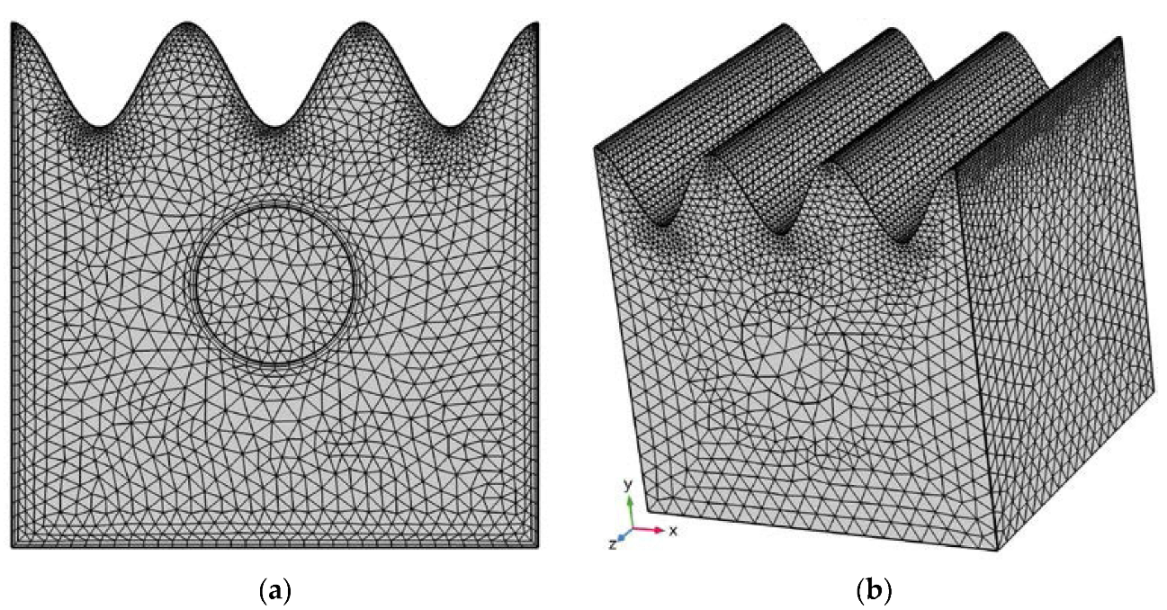
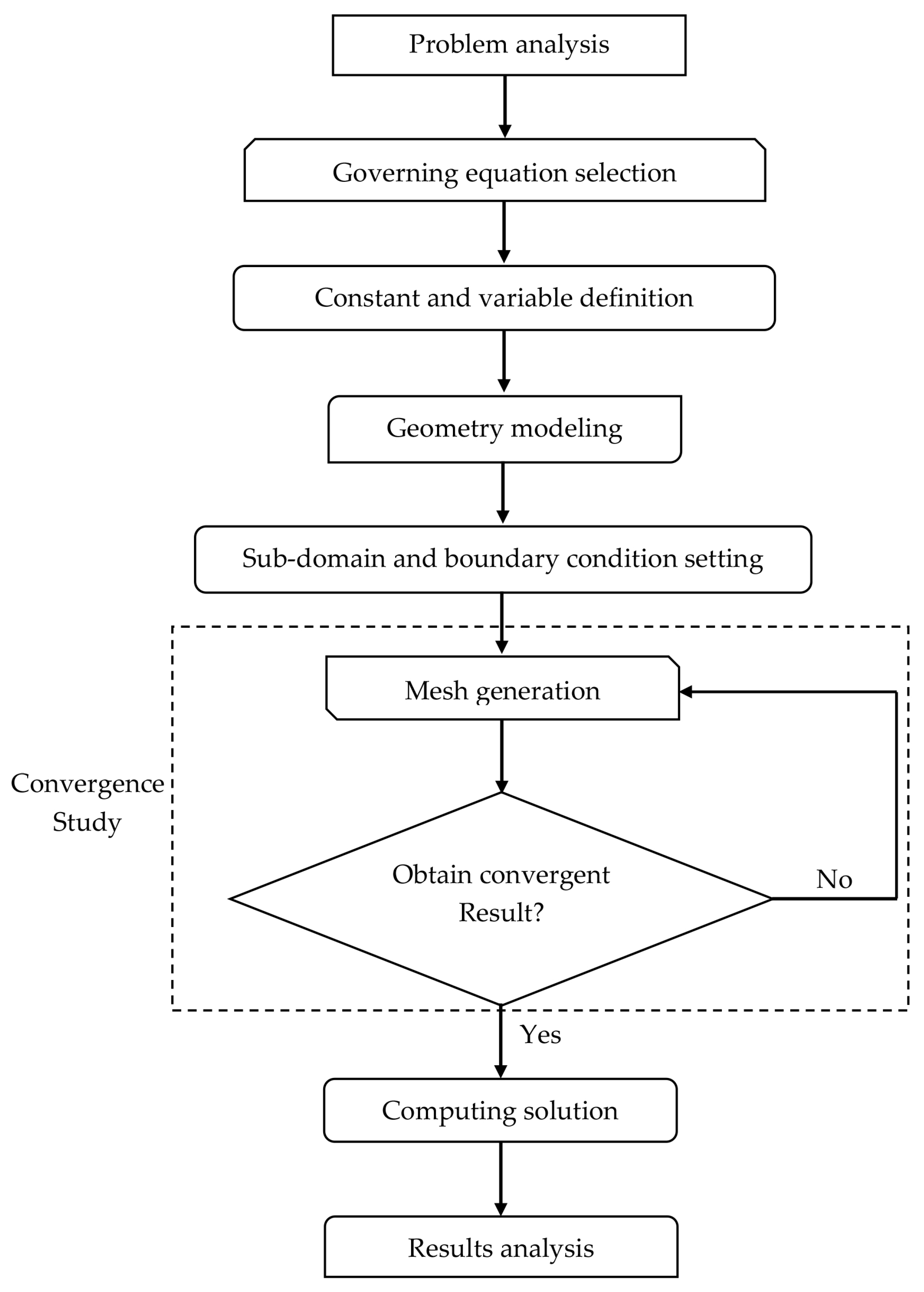
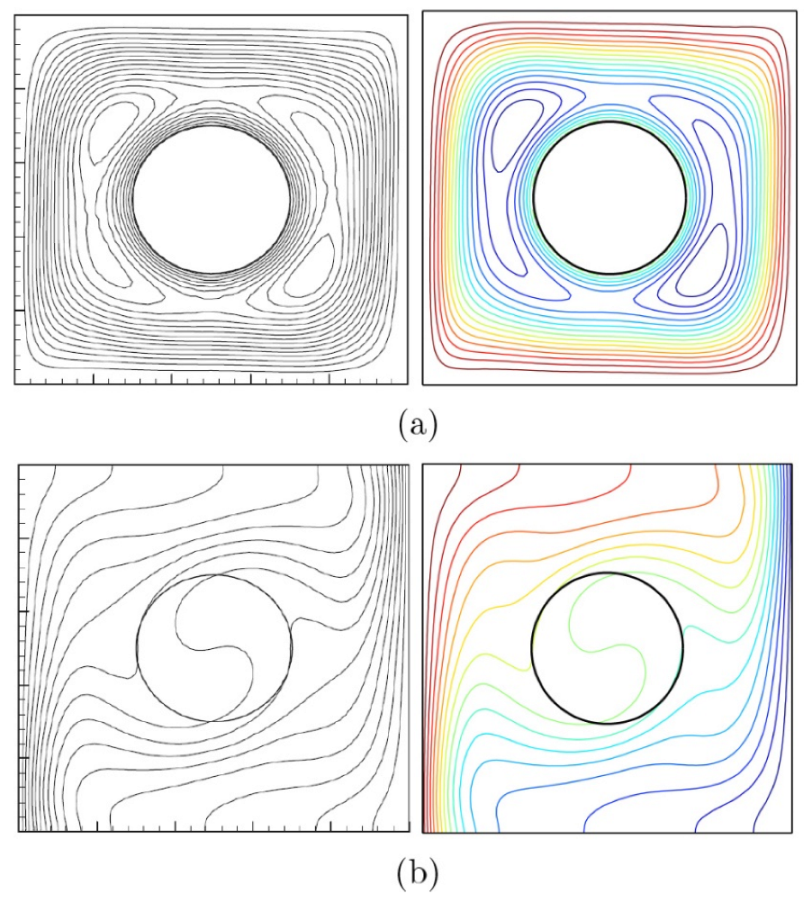

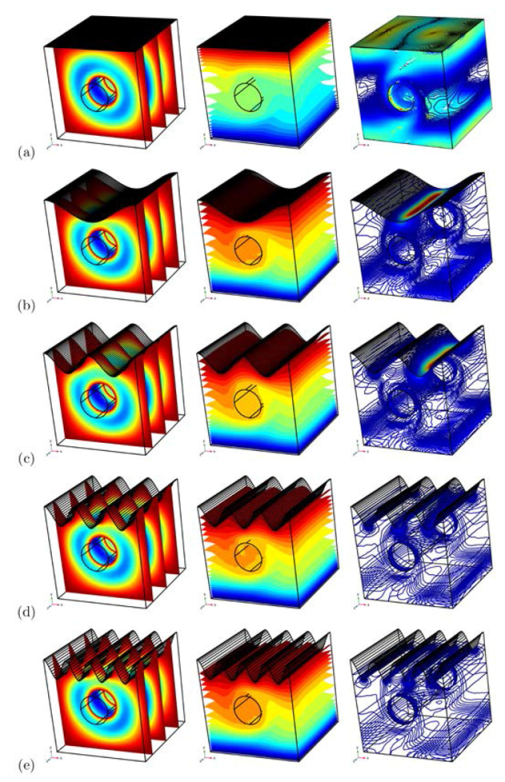
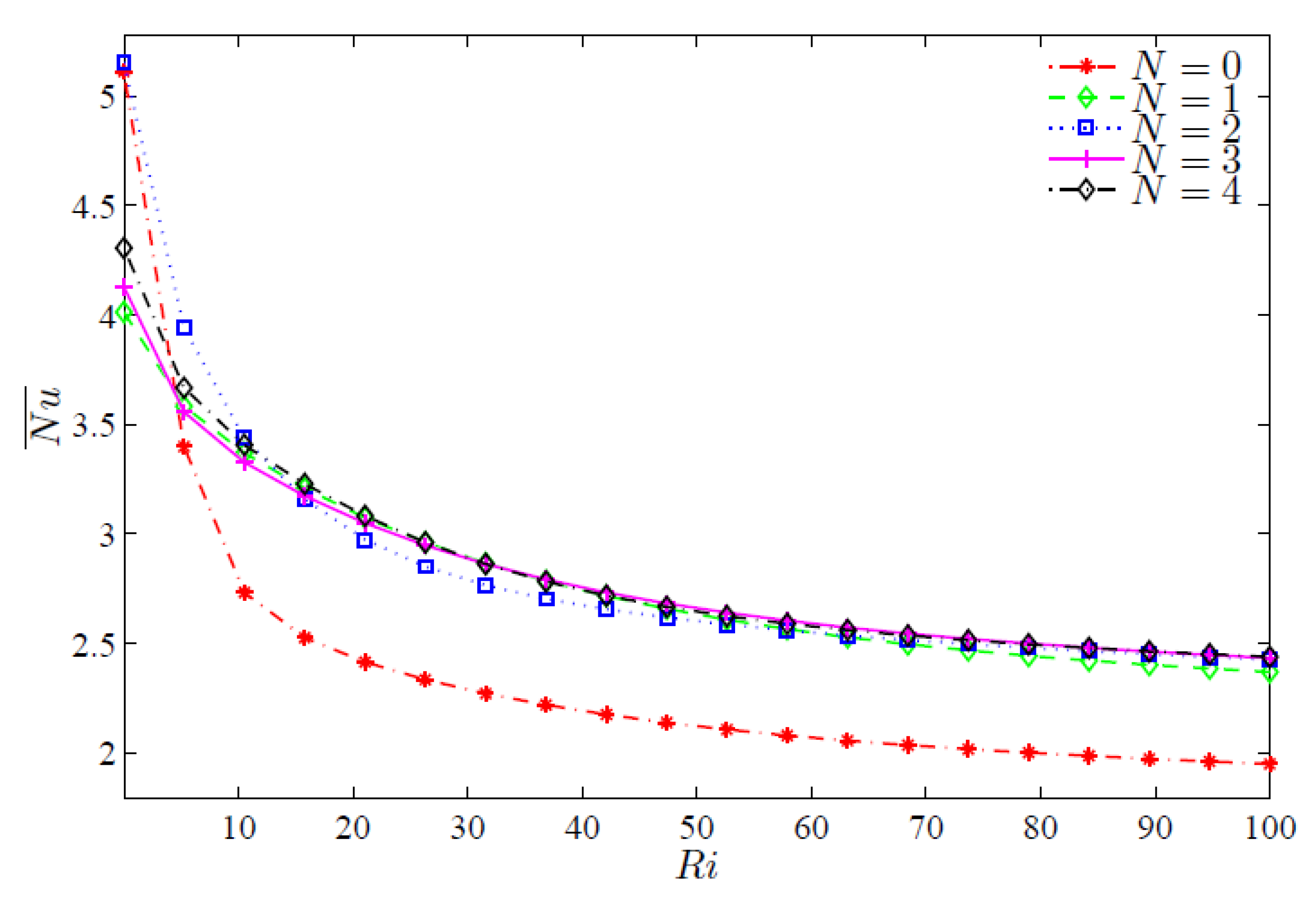
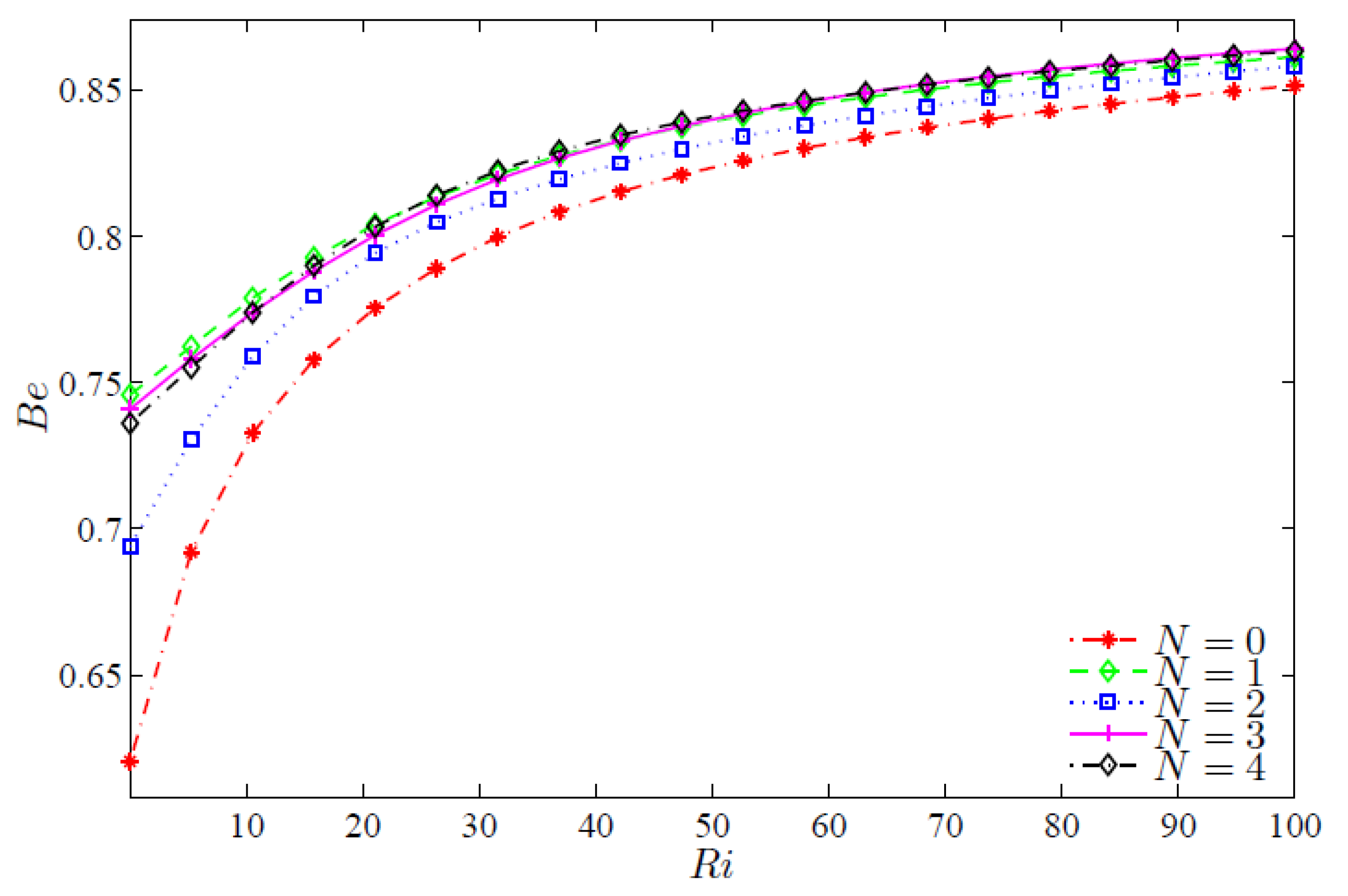
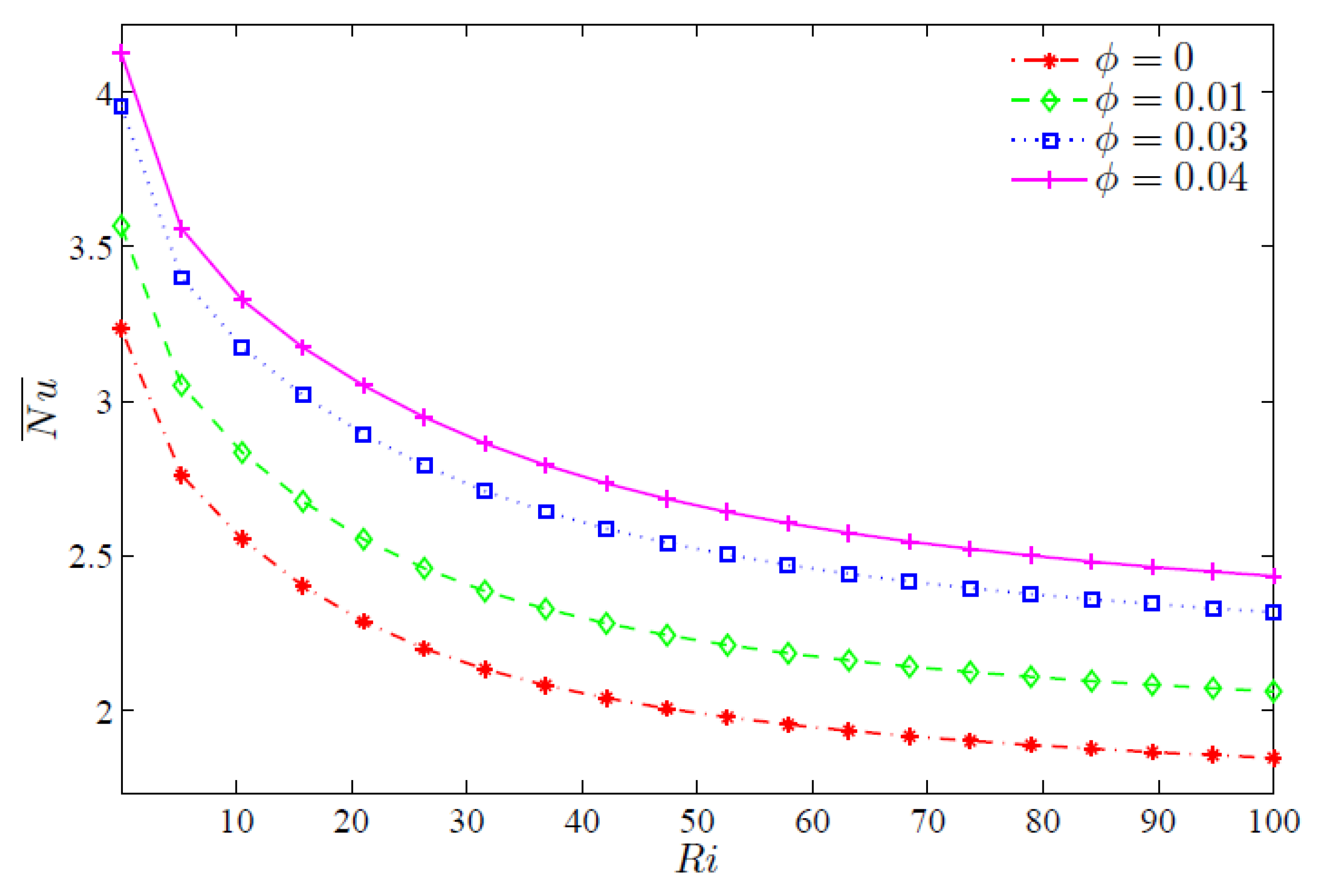
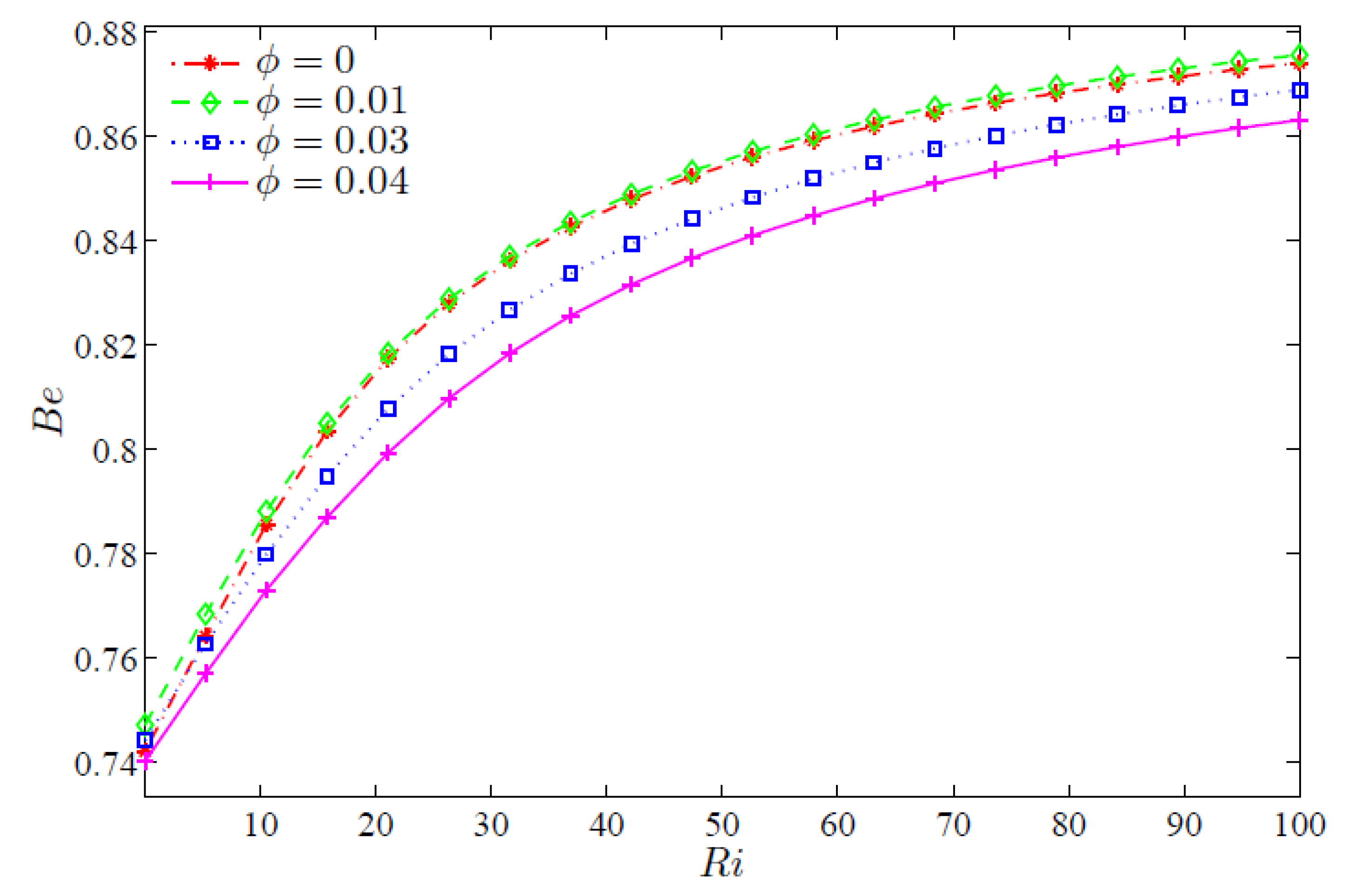
| Grid Size | Number of Elements | ||
|---|---|---|---|
| G1 | 29,232 | 3.2125 | 0.75409 |
| G2 | 40,048 | 3.1114 | 0.76723 |
| G3 | 64,062 | 3.0628 | 0.77657 |
| G4 | 117,485 | 3.0419 | 0.77769 |
| G5 | 196,494 | 3.0286 | 0.78236 |
| G6 | 358,668 | 3.0201 | 0.78238 |
| Physical Properties | Al2O3 | Fluid Phase (Water) |
|---|---|---|
| (kg/m3) | 3970 | 993 |
| (J/kgK) | 765 | 4178 |
| 0.85 | 36.2 | |
| 40 | 0.628 | |
| 33 | 0.385 | |
| – | 695 |
Disclaimer/Publisher’s Note: The statements, opinions and data contained in all publications are solely those of the individual author(s) and contributor(s) and not of MDPI and/or the editor(s). MDPI and/or the editor(s) disclaim responsibility for any injury to people or property resulting from any ideas, methods, instructions or products referred to in the content. |
© 2022 by the authors. Licensee MDPI, Basel, Switzerland. This article is an open access article distributed under the terms and conditions of the Creative Commons Attribution (CC BY) license (https://creativecommons.org/licenses/by/4.0/).
Share and Cite
Alsabery, A.I.; Alshukri, M.J.; Jabbar, N.A.; Eidan, A.A.; Hashim, I. Entropy Generation and Mixed Convection of a Nanofluid in a 3D Wave Tank with Rotating Inner Cylinder. Energies 2023, 16, 244. https://doi.org/10.3390/en16010244
Alsabery AI, Alshukri MJ, Jabbar NA, Eidan AA, Hashim I. Entropy Generation and Mixed Convection of a Nanofluid in a 3D Wave Tank with Rotating Inner Cylinder. Energies. 2023; 16(1):244. https://doi.org/10.3390/en16010244
Chicago/Turabian StyleAlsabery, Ammar I., Mohammed J. Alshukri, Nasr A. Jabbar, Adel A. Eidan, and Ishak Hashim. 2023. "Entropy Generation and Mixed Convection of a Nanofluid in a 3D Wave Tank with Rotating Inner Cylinder" Energies 16, no. 1: 244. https://doi.org/10.3390/en16010244
APA StyleAlsabery, A. I., Alshukri, M. J., Jabbar, N. A., Eidan, A. A., & Hashim, I. (2023). Entropy Generation and Mixed Convection of a Nanofluid in a 3D Wave Tank with Rotating Inner Cylinder. Energies, 16(1), 244. https://doi.org/10.3390/en16010244








